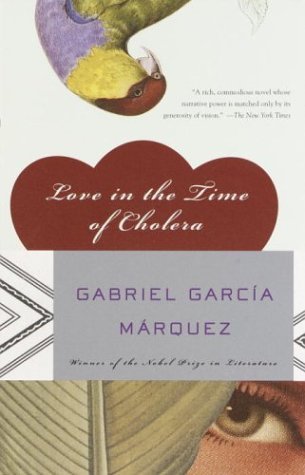
Anyone who knows me knows that I love literature. But
lately I have found myself questioning what could be perceived as the
stereotypical/traditional gender roles and machista behavior of male
characters. Should this simply be read as a representation of the time period
in which the work was written, i.e. as literature; or is viewing it in this way
actually doing harm to the way we perceive ourselves and our roles in society,
especially women?
I found myself pondering these questions over and over
again while reading Gabriel García Márquez’s Love in the Time of Cholera. Now, to repeat myself: anyone who
knows even a little about me knows I love literature, especially Hispanic
literature—I completed a freaking Master’s degree in the subject. And I enjoy
literature from all time periods.
But from the basic premise to the eventual outcome of
this novel, I found myself a bit peeved by the strong gender stereotypes I
found myself up against. And yes, I found myself up against them—not only was I
annoyed by them, but I felt as though I should be doing something to actively
counteract what I perceived as potential harm. Hence why I’m writing this post.
Let me present some basic plot summary of Gabo’s famous
novel (which also has a film version that is very true to the novel, a fact
which I’m not sure I found pleasing as a book lover or annoying as a feminist).
Florentino Ariza and Fermina Daza, as teengaers, find themselves feverishly in
love with each other until Fermina’s father takes her away to escape the presence
of Florentino. Florentino waits impatiently for two years for the return of
Fermina, but when she does return, Fermina has decided that what she thought
was love was a “mere illusion” and tells him so, thus ending the relationship. Here is where my problems begin. Florentino,
instead of chalking this experience up to life and moving on, persists in
loving her and basically stalking her for the next 51 years of their lives,
waiting for her husband to die.
An earlier and more romantic version of myself might have
found this plot agreeable—I might have loved Florentino’s character and been
watiting for Fermina’s husband to die myself—but the feminist version of me was
internally groaning. What if a teenager read this book and internalized that a
man never letting you go was romantic? That even when you rejected him, he had
the right to present his feelings repeatedly to you and then to stalk you for
an extended period of time? Of course this is just literature, but who knows
what readers internalize and remember subconsciously for the rest of their
lives?
And what irked me even more about this plot was that upon
her husband’s death, finally, after “fifty-one years, nine months, and four
days” as Florentino never lets readers forget, he has the audacity to show up
at Fermina’s house the day of the funeral to once again declare his love for
her, telling her that now is his opportunity, because he has been waiting and
now it is his turn. To present it this way is to state that women aren’t
entitled to their own feelings. After all, she did reject him. But the kicker
is, that after a few more months of perseverance, Florentino does convince her,
and she changes her mind. They spend the rest of their days together.
Maybe I’m taking this too far. Maybe literature is just a
reflection of the time period in which it was written and nothing more. But to
what extent do we forgive, or ignore, stereotypes in literature, however damaging
they may be? To what extent do we bring them into our lives by reading them
every day? Maybe not much, but I know that I won’t be forgetting Love in the Time of Cholera anytime
soon.